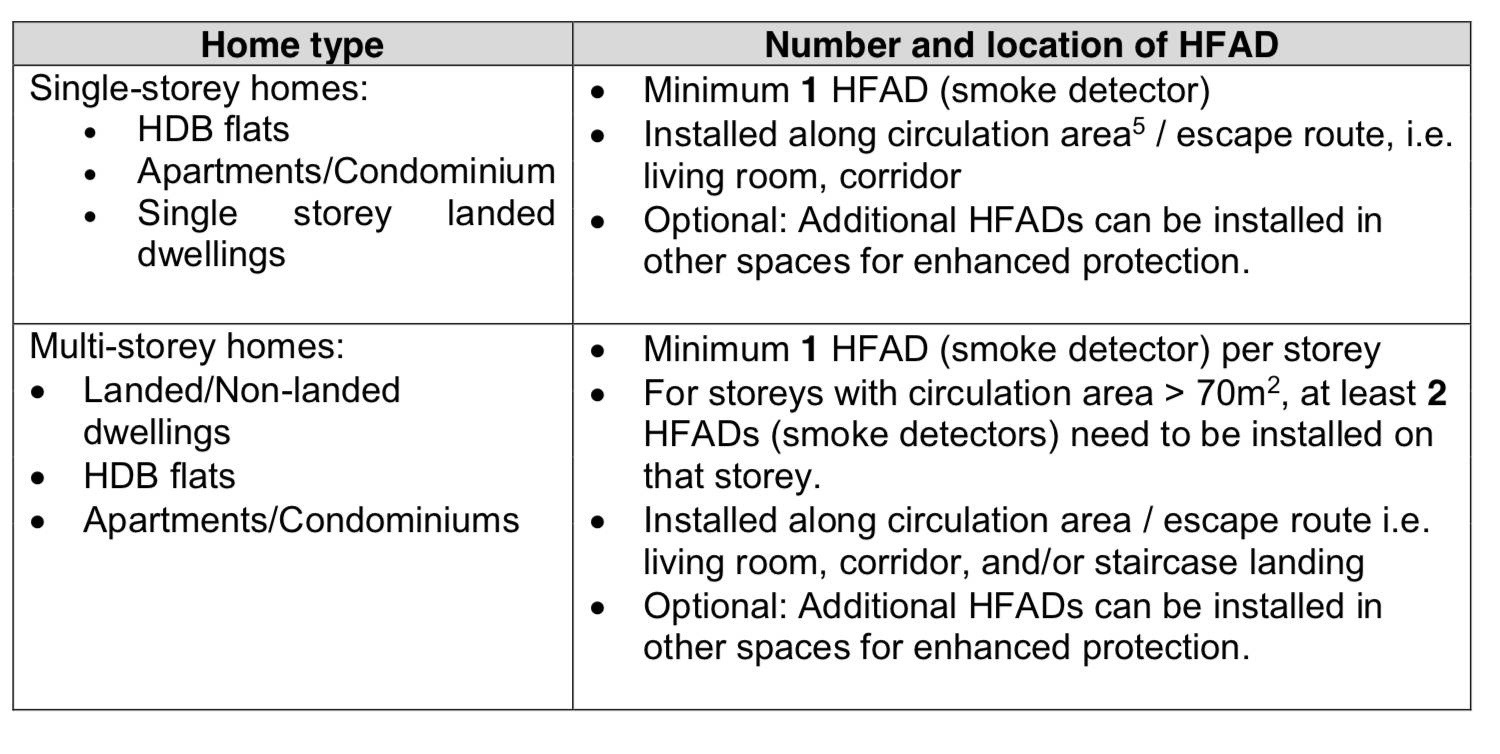It’s essential to invest in the safety of your family.
16 May 2018
Did you know that in 2016, 70% of fire injuries in Singapore came from fires that started in homes? With statistics like this, it makes absolute sense to make smoke detectors or Home Fire Alarm Devices (HFADs) mandatory in all homes.
In November 2017, the Government announced that all new residential buildings that begin construction after June 2018, including HDB flats, will be required to have HFADs. For everyone’s safety, existing homeowners are also encouraged to affix smoke detectors in their homes.
Here we aim to answer some important questions Singaporean homeowners might have.
Do you really need a smoke detector?
Yes. Currently, the Singapore Civil Defence Force says it’s not mandatory for existing homeowners to retrofit smoke detectors, but it’s highly recommended, especially if you have kids and elderly parents at home.

Since smoke alarms are working 24 x 7 and usually have a lifespan of 10 years, they act like your ‘nose’ when you’re not home or if you are fast asleep at night.
It’s the smartest way to safeguard yourself and your family against fire-related problems including toxic gases and smoke. It gives you a head start – you can put out the fire quickly or escape and call the fire brigade if it has escalated.
What should you look for in a smoke detector/HFAD?
When choosing a smoke alarm, the Singapore Civil Defence Force suggests checking if it operates on smoke detection technology alone, or includes any multi-sensor detector with smoke detection capability. Pick one that has a battery or working condition indicator so that it’s easy to detect if it has stopped working.
You also need a test button and a silence or reset feature for false alarms. Choose one with a sound loud enough to alert everyone at home.
Most quality smoke detectors come with built-in batteries that do not have to be replaced for 10 years. Some are fixed with dry-cells which need to be changed regularly. In either case, it’s best to select an HFAD that has a visible battery indicator so you don’t have to rely on guesswork.

For instance, we found that the newly launched Clipsal Smoke Detector by Schneider Electric has a photoelectric sensor, low profile design (won’t disturb the decor) and a built-in lithium battery with a 10-year lifespan.
It’s fitted with a large, easy to access test button that doubles as a Hush button for false alarms. Plus, the Clipsal Smoke Detector by Schneider Electric will beep audibly every 40 seconds when the battery is low. It also has the ability to wirelessly connect with other compatible smoke alarms in the house.
Where should you install them?
All over the world, the placement of smoke alarms is governed by local law. Back home, the Singapore Civil Defence Force has listed the number of devices and their ideal locations.

The circulation area refers to common areas such as the living room, corridors, dining room or staircase landings. It excludes spaces such as bedrooms, storerooms or bathrooms.
Who maintains the smoke detector/HFAD?
As per the Singapore Civil Defence Force guidelines, homeowners and/or occupants are responsible to keep their home fire safety provisions in proper working condition. This includes HFADs, fire extinguishers, and other related goods.
Since the HFADs also have an end-of-life date that differs from product to product, we suggest you make a note of the date on your Google Calendar for ease of reference.

Although there are S$5 smoke alarms available in the market, refrain from using them. Make sure you invest in quality goods for your safety.
Top image by photographer Sun Hai Ting for Atelier About Architecture for this home in Beijing, China
All other images show Clipsal Smoke Detector by Schneider Electric. Images courtesy of Schneider Electric
Like what you just read? Similar articles below